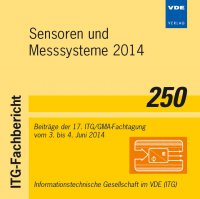Piezoresistive Ceramics for High-Temperature Force and Pressure Sensing
Conference: Sensoren und Messsysteme 2014 - Beiträge der 17. ITG/GMA-Fachtagung
06/03/2014 - 06/04/2014 at Nürnberg, Deutschland
Proceedings: Sensoren und Messsysteme 2014
Pages: 4Language: englishTyp: PDF
Personal VDE Members are entitled to a 10% discount on this title
Authors:
Roth, F.; Ionescu, E.; Nicoloso, N.; Riedel, R. (TU Darmstadt, Institut für Materialwissenschaft, Jovanka-Bontschits-Str. 2, 64287 Darmstadt, Germany)
Guillon, O.; Schmerbauch, C. (Friedrich-Schiller-Universitaet Jena, Chemie und Geowissenschaften, Fuerstengraben 1, 07743 Jena, Germany)
Abstract:
Here we report on the high-temperature piezoresistivity of carbon-containing silicon oxycarbide nanocomposites. Sam-ples with contents of segregated carbon of 13.5 vol% were prepared from a polysilsesqioxane via thermal cross-linking, pyrolysis and subsequent hot-pressing. Their electrical resistance was assessed as a function of the mechanical load (1 -10 MPa) and temperature (1000 – 1200 °C). The piezoresistive behavior of the C/SiOC nanocomposites relies on the presence of a disordered sp2 - sp3 carbon network, as revealed by Raman spectroscopy. C/SiOC exhibits enhanced k fac-tor values as compared to highly-ordered graphite (HOPG) or graphene, though lower than those reported for similar C/SiOCN nanocomposites. In view of the measured k values of about 40 at the highest temperature reading (T = 1200 °C), C/SiOC is a primary candidate for high-temperature piezoresistive force and pressure sensors.


